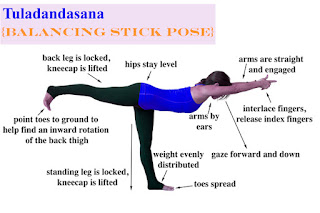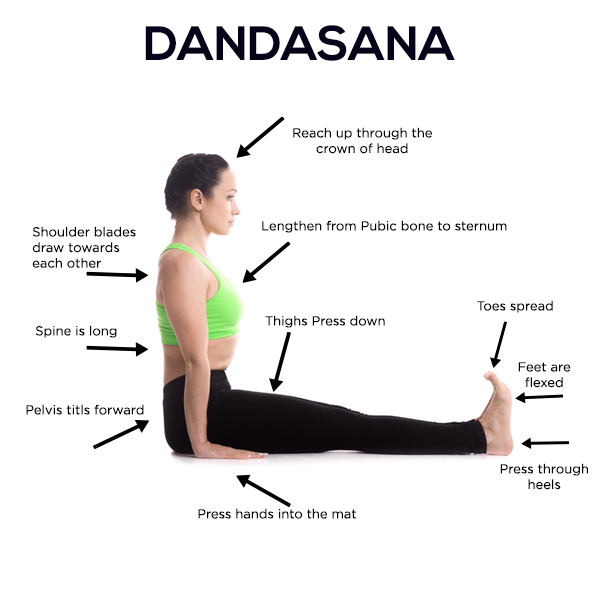Surya Namaskar is a salute to Lord Surya
Surya Namaskar
Surya Namaskar is a salute to Lord Surya or Sun God. According to the Vedic texts, worship of Sun God promotes good health “aarogyam bhaskaraath iccheth.”The ancient yogis practiced Surya Namaskar every early morning, facing the sun to greet the new day and derive divine energies for health and prosperity. Surya Namaskar is not an asana but a yoga warm-up that refreshes and energizes. It limbers the body and mind for asana practice. It is a dynamic sequence of twelve postures, repeated to make a set of twenty-four postures. Five to ten sets are performed at a time to promote biological changes. Each posture is performed by inwardly chanting a mantra and feeling the hidden powers of divinity. The breath is rhythmically synchronized with the movements. When practiced with awareness in a slow pace the gain is physical, mental, and spiritual. When practiced mechanically at a fast pace, the gain is only physical. Surya = Sun or Sun God, Namaskar = bow to Benefits with the everyday practice for few weeks ▪ Improves self-awareness, flexibility, agility, and strengths ▪ Relieves fatigue, lethargy, stiffness, tensions, and pain ▪ Increases stamina and builds positive energies ▪ Develops mind focus, alertness, and confidence ▪ Reduces negative energies, excess weight, and burns toxins |
1. Om Mitrāya Namah (Salutations to the friend) Pranamasana Exhale, stand upright, with your hands in the prayer position. Look inwards.
2. Om Rāvaye Namah (Salutations to the ever-shining) Hasta Uttanasana Inhale, raise your hands up, gently bend backward. Look upwards.
3. Om Sūryāya Namah (Salutations to the cosmic light) Pada Hasta Asana Exhale, bend forward, stretch your legs, press your palms on the floor, on the sides of your feet. Look downwards.
4. Om Bhānave Nama (Salutations to the illuminator) Anjaneya Asana Inhale, stretch your right leg far behind. Arch your spine. Look forwards.
5. Om Khagāya Namah (Salutations to the performer) Adho Mukha Svanasana Exhale, take your left leg far behind. Align your legs back and stretch your limbs. Look downwards.
6. Om Pusne Namah (Salutations to the nourisher) Ashta Anga Namaskara Inhale, bring your toes under, knees down and hips up. Exhale, rest your chest and chin on the floor. Look downwards.
7. Om Hiranya Garbhāya Namah (Salutations to the cosmic power) Urdhva Mukha Svanasana Inhale and raise your head and chest, lift your thighs and pelvis off the floor. Stretch forward and arch your back. Look upwards.
8. Om Marīcāye Namah (Salutations to the cosmic rays) Adho Mukha Svanasana Exhale, press your palms and feet on the floor, raise your hips up and lower your head. Stretch your legs and hands. Look downwards.
9. Om Adityāya Namah (Salutations to the son of Aditi) Anjaneya Asana Inhale, bring your right foot forward between your palms. Stretch your left leg back. Arch your back and open your chest. Look forward.
10. Om Sāvitre Namah (Salutations to the stimulator) Pada Hasta Asana Exhale, bring your left foot forward, straighten your legs, bend forward. Stretch your hands downwards. Lower your head. Look downwards.
11. Om Arkāya Namah (Salutations to the elixir of life) Hasta Uttanasana Inhale, roll up, straighten your back, stretch your hands up and bend backward. Look upwards.
12. Om Bhāskarāya Namah (Salutations to the enlightener) Pranamasana Exhale, stand upright, with your hands in the prayer position. Look inwards.
- Asana Practice Asanas can be practiced by people of any age, ability, or condition Consult a doctor if you have cardiac or any other medical problem Learn asanas from a knowledgeable and experienced yoga teacher
- Those with health issues must practice with the guidance of a teacher Inform your teacher about your health issues and about your lifestyle Start your asana practice three to six months after delivery or any surgery
- Avoid practice during fever, diarrhea, or any condition that drains your energy Practice half an hour after taking a beverage and four hours after a meal Keep your stomach, bowels, and bladder empty before your practice A bath before and after your practice will refresh your body and mind Wear modest, loose, comfortable clothing, that will allow free movement Warm-up your body before practice;
- Cold and stiff muscles may cause injury Practice in a well ventilated and clean room, only on a non-slip yoga mat
- Do not practice asanas on a bed or on sand or on any uneven surface
- Respect your body and listen to your body; do as much as your body allows
- Start your practice with relaxation asanas, when you feel dull or exhausted Follow the given cautions and instructions to avoid discomfort or injury
- During menstruation avoid leg lifts, backward bends, inversions, and twists Pregnant women must practice with the guidance of an experienced teacher Practice every day at the same time with passion and commitment


Comments
Post a Comment